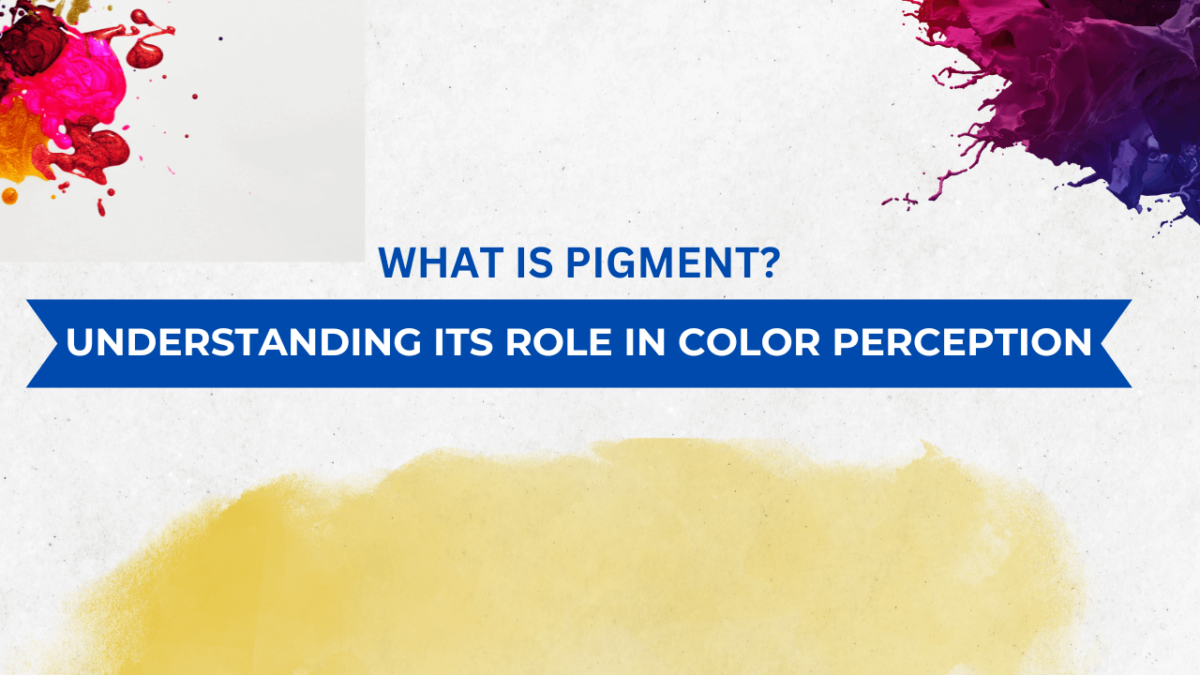A pigment is a powder that imparts colors to enhance the visual appearance. Pigments are inorganic compounds that are completely insoluble in water and most solvents, whereas dyes are colored substances soluble in water and other media. Both dyes and pigments are different from each other, and each functions differently and serves various purposes.
Alright! In this blog post, we will discuss pigment and its role in how we see colors. Pigments are mainly used to impart colors to the material they are applied to. Furthermore, cosmetic color dye pigments are broadly used for coloring different cosmetic products, such as eyeliner, lipstick, and glow cream.
The primary purpose of using pigments is to enhance the visual appearance of products and make them more appealing to customers. Additionally, the use of pigments is widespread in cosmetics and home and personal care products. If you are still wondering what pigment is and its role in how we see colors, continue reading this blog.
So, without further ado, let’s start with the basics!
What is a Pigment?
Pigments are classified as inorganic and organic, or colored substances that change a material’s appearance when applied. Inorganic pigments are derived from natural sources, such as natural ores and oxides, through chemical reactions of metals. You can find various inorganic pigments that last longer and brighter than organic ones.
Organic pigments are produced from coal tar, petrochemicals, and other materials. Organic pigments are less bright than inorganic dyes. Inorganic pigments are further classified as synthetic inorganic pigments and natural mineral pigments.
Natural mineral pigments are those produced from natural sources, including plants, trees, soil, and minerals. Peacock stone, turquoise, and ochre are some examples of natural mineral pigments. Rock paints are another example of these pigments used in Japanese painting. Moreover, pharmaceutical colors and pigments are famous for coloring various medical devices and dosage forms.
On the contrary, synthetic inorganic pigments are derived from bonds, oxides, and other compounds through chemical reactions of metals, including lead, copper, and iron. Cobalt blue, lead yellow, and titanium white are examples of mainly 18th to early 20th-century metals that were discovered, manufactured, and used.
Other “special pigments ” have also been designed and developed, like fluorescent pigments that glow brightly in the dark.
Uses of Pigments
Pigments are substances that absorb specific wavelengths and provide color to materials. They have many uses, including:
1. Cosmetics
Pigments, including eye shadow, nail polish, lotions, and lipsticks, are widely used in cosmetics.
2. Food
Pigments are those substances that give color to various food products, including foods that contain fats and oils.
3. Plastics
Organic pigments are widely used to color different plastic products effectively.
4. Paints
Inorganic pigments are most commonly used in paints for outdoor products as they are cost-efficient, providing great resistance to weather.
5. Printing inks
Organic pigments provide exceptional quality coloring powder and more vivid colors, and are used in printing inks.
6. Face powder
The shiny and highly adhesive properties of white and colorless pigments make them ideal for use in face powder.
7. Electronic parts
Carbon black offers conductive properties and is widely used in various applications in electronic parts.
How Do We See Colors?
Because of the friction behind color perception, how we see colors and how they influence our lives could be more complicated. A number of physics principles are involved in how we see colors and how they affect our color perception, such as wavelengths of energy, reflections, and signals that zap back and forth between the brain and the eyes.
ROYGBIV is an excellent example of different colors with different wavelengths that you might have been taught in school. This pattern represents energy wavelengths, where red has the longest wavelength, whereas violet is known for the shortest wavelength.
When sunlight comes into contact with an object, some materials absorb specific wavelengths, while some wavelengths that are not absorbed are reflected. When this reflected light reaches our eyes, we perceive the reflected wavelengths as colors.
And this is how it influences how we see colors and our color perception of different objects.
Factors that influence how we see color
Many factors influence color vision in addition to innate or learned color perception:
1. Lighting
Lighting plays a great role in how we see color and how it influences color perception. Light has a specific color that your brain perceives based on its color. When you compare colors, it is important to check them side-by-side under controlled lighting.
2. Background Effects
The background against which we are evaluating color strongly affects the ability of our eyes to perceive colors correctly. This is called simultaneous contrast.
3. Retinal Fatigue
It’s common to experience tiredness with your eyes. Long-term eye viewing depletes chemicals in our eyes, causing the brain to receive inaccurate information.
4. Poor Color Memory
Experiencing human color memory is terrible. Color matches are impossible even when two colors are across the room.
5. Age
As we can see, the color starts changing, and the look fades over time. There is no need to be born with a natural ability to perceive colors; you can also learn it.
Conclusion
The bottom line is that pigments and colors play a vital role in our lives, providing various materials with different hues and shades. Pigments are most commonly used in cosmetics, plastics, painting, and home and personal care products. In contrast, colors are widely used for various applications in different industries, including foods, drugs, cosmetics, and textiles.
Based on the physics of color psychology, various factors directly influence how we see colors. If you need more information on dyes or colorants or have any further questions or queries, please contact us today.




